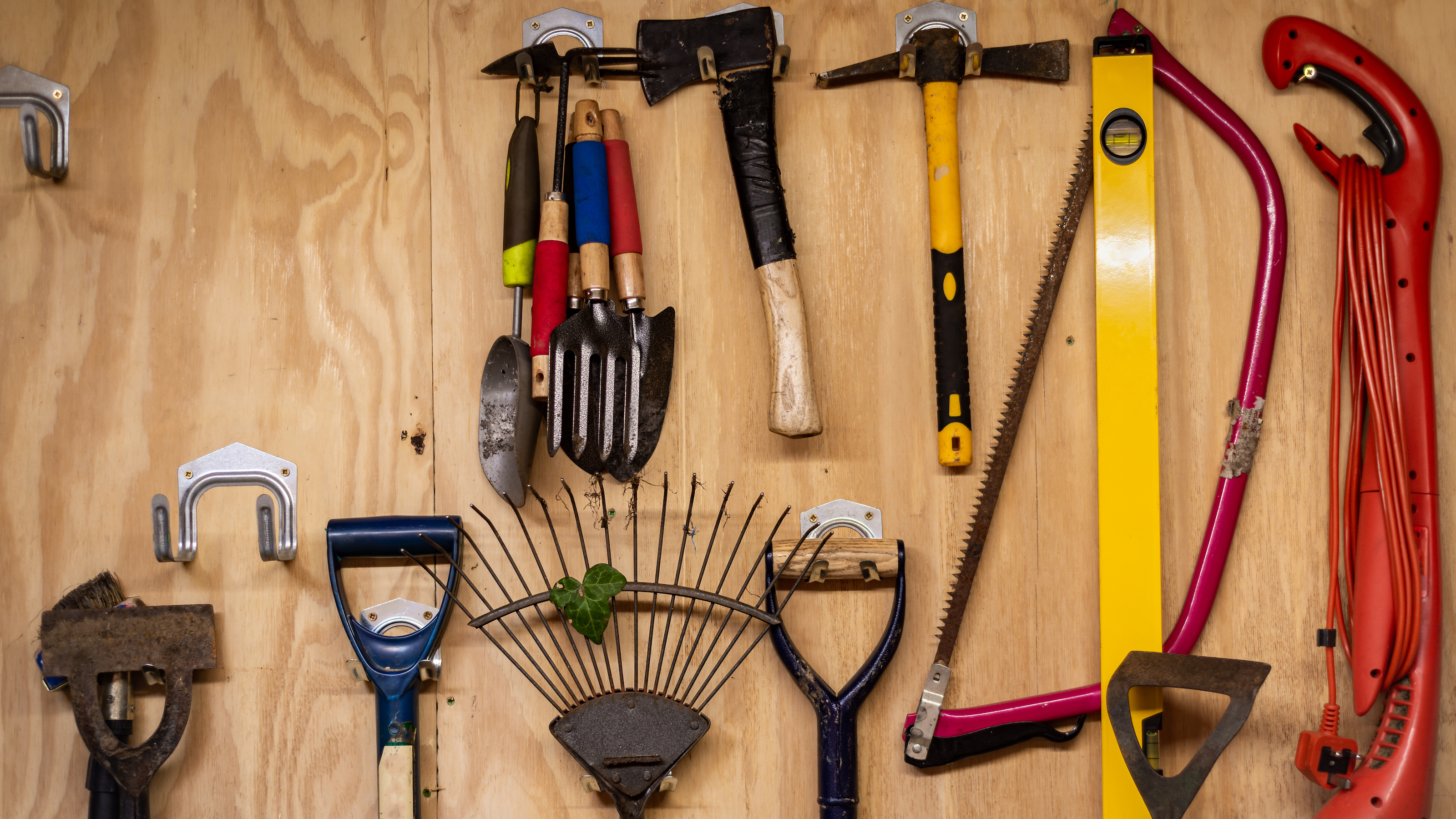£67k Straw Bale Self Build
This straw bale and timber frame self build home in Exmoor National Park was built almost entirely by its owners for just £67,000
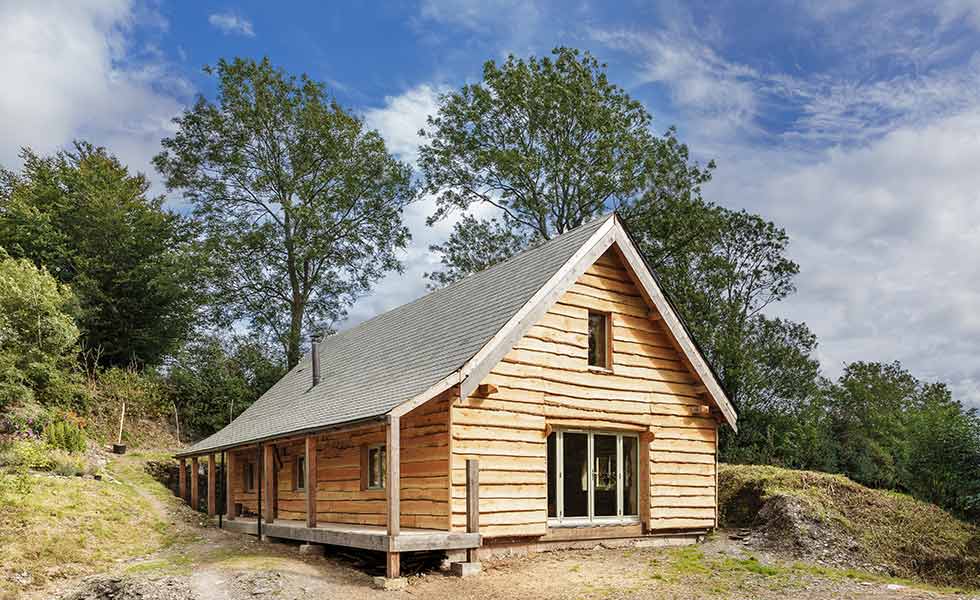
When Justin and Linda Tyers decided to build a straw bale home in Somerset, they purchased their plot for just £50k under Exmoor National Park’s affordable housing policy.
“The policy allows plots to be sold below market value to people with a local connection, but the resulting house has to remain affordable if ever sold,” explains Justin. The policy imposes a size restriction of 90m2 on single dwellings, too.
The result is a comfortable two-bed home which the couple designed and built themselves almost entirely on a DIY basis.
Building a Home on a Budget
Linda and Justin saved a considerable amount of money by not only designing their straw bale home, but by taking on almost all the labour themselves.
Laying the concrete slab foundations (with the aid of a mini digger and driver), installing the timber frame, slating the roof, building the straw bale walls, plastering and the first and second fix plumbing were just a few tasks they took on.
Material specification was also key to ensuring a low build cost. “Every time we bought something we had cost in mind because the budget was fairly lean; we had to consider every pound spent,” says Linda.
The couple bought their windows unpainted and unglazed and finished them on site, saving money. They also sourced the straw bale from a local farmer for £1,000, with the timber for the frame sourced from a nearby sawmill and wood for the flooring and kitchen carcassing bought directly from the Forestry Commission.
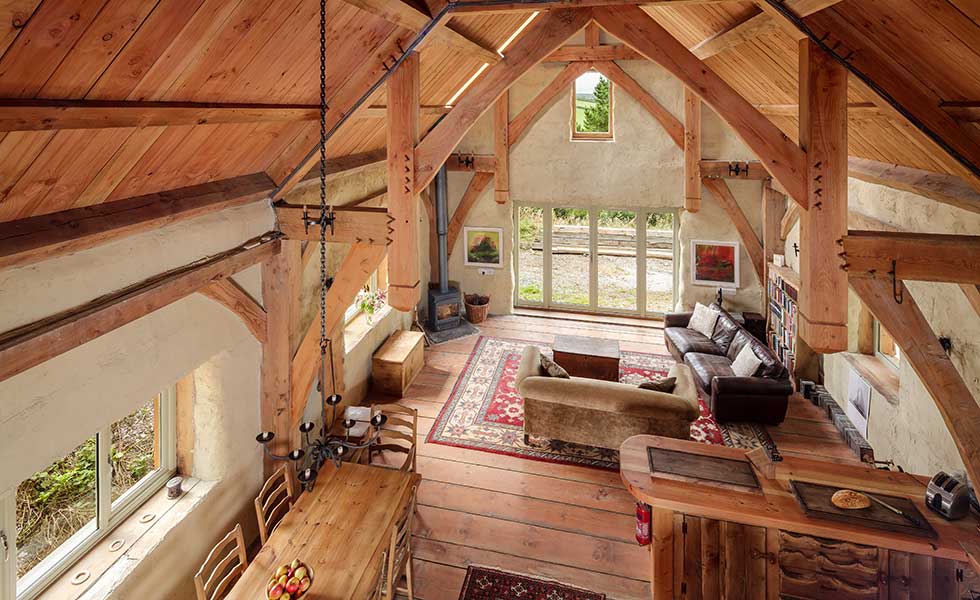
An Off-Grid Home
This new build is completely off grid with water, drainage and power provided on site. “It was going to be very expensive to connect to electricity, so we decided to go off grid,” says Justin.
PV panels generate the couple’s electricity, with a bank of batteries storing power for night-time use. What’s more, when the PV panels charge the batteries to 100 per cent, the system automatically turns the immersion heater on — the surplus energy heats the water.
A wood-fired range is used for cooking but also supplies hot water and space heating when it’s running in the winter. In the summer months, an immersion heater supplies hot water and the couple use a LPG hob.
The couple admit that off-grid living does require some consideration. “The key really is to do those power-hungry things – running the washing machine, power tools, and so on – on a sunny day and the panels will take care of the power needed in real time.”
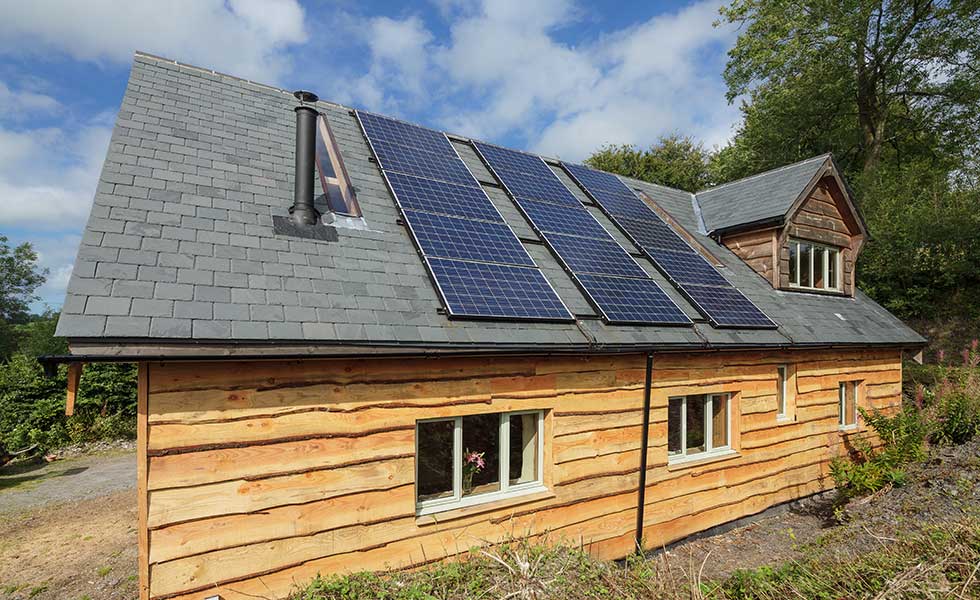
Building in Straw Bale
“I don’t know where it came from, but we had a strong idea that we wanted to build in straw bale,” says Linda of the construction.
There are a number of ways to build in straw, including:
- loadbearing straw bale, with the straw providing a structural role
- the infill method, whereby straw bale is used to infill a structural timber frame or similar (which the couple opted for)
- and a modern-day option: prefabricated timber panels insulated with straw
Part of the appeal of using straw bale, apart from the opportunity to construct the walls on a DIY basis, was the cost. The couple bought their 310 bales from a local farmer for £1,000.
Scheduling the delivery and erection of the bales was crucial. “We wanted to get the straw bale walls up before the end of summer. And you need build the roof first, because the bales need to be kept dry under the roof,” explains Justin.
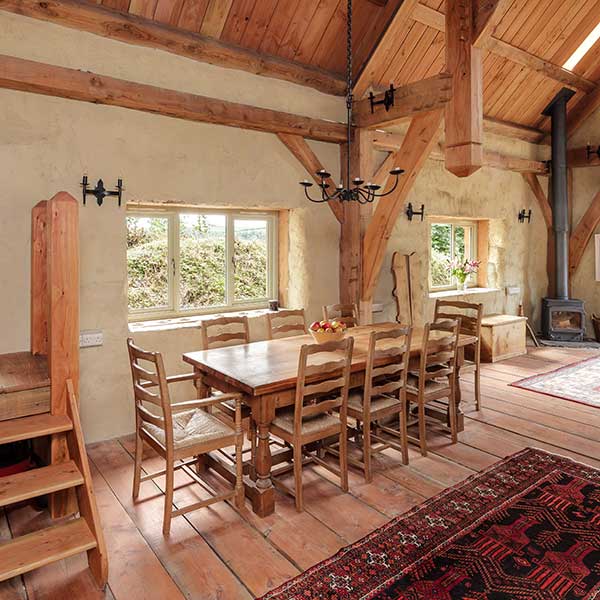
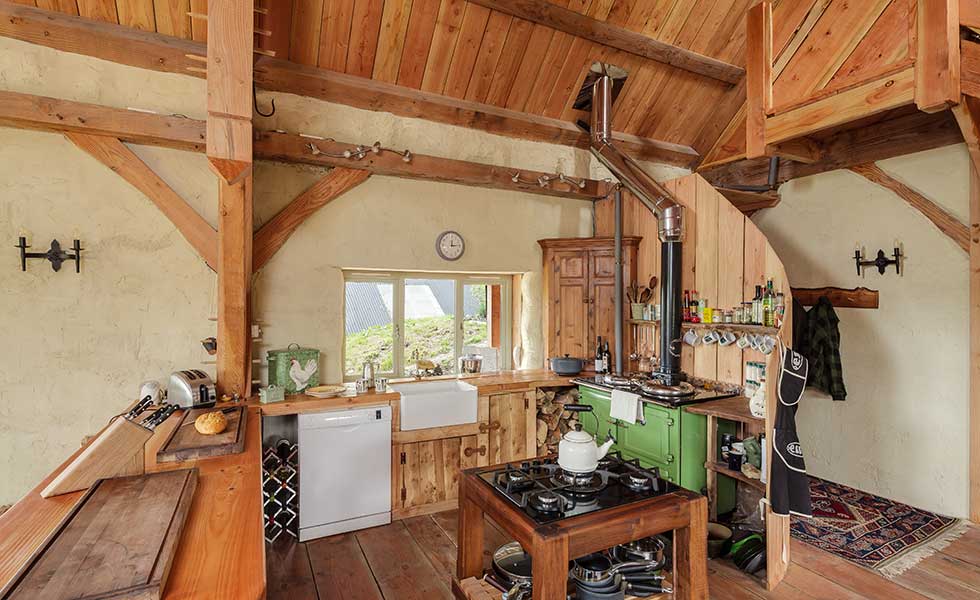
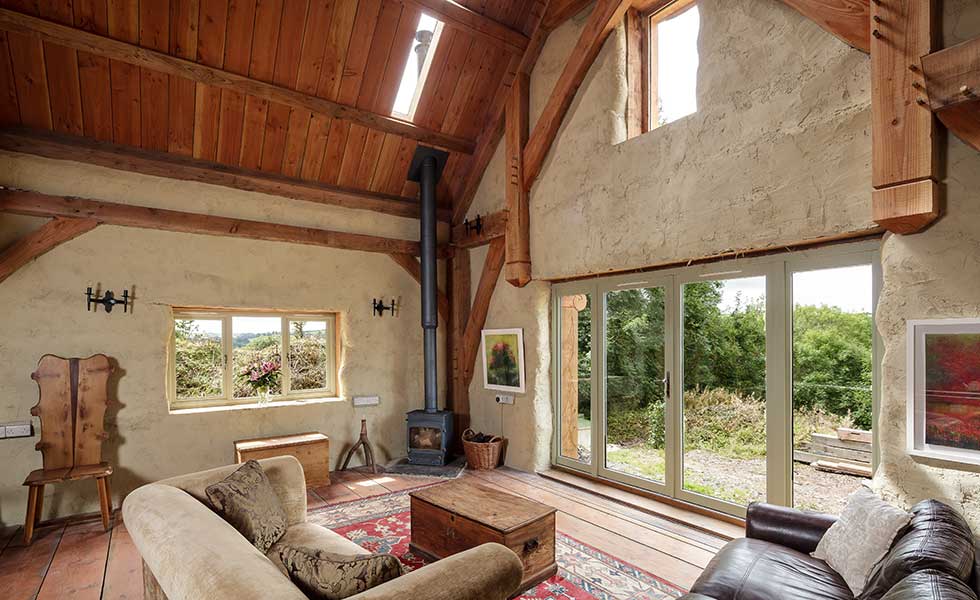
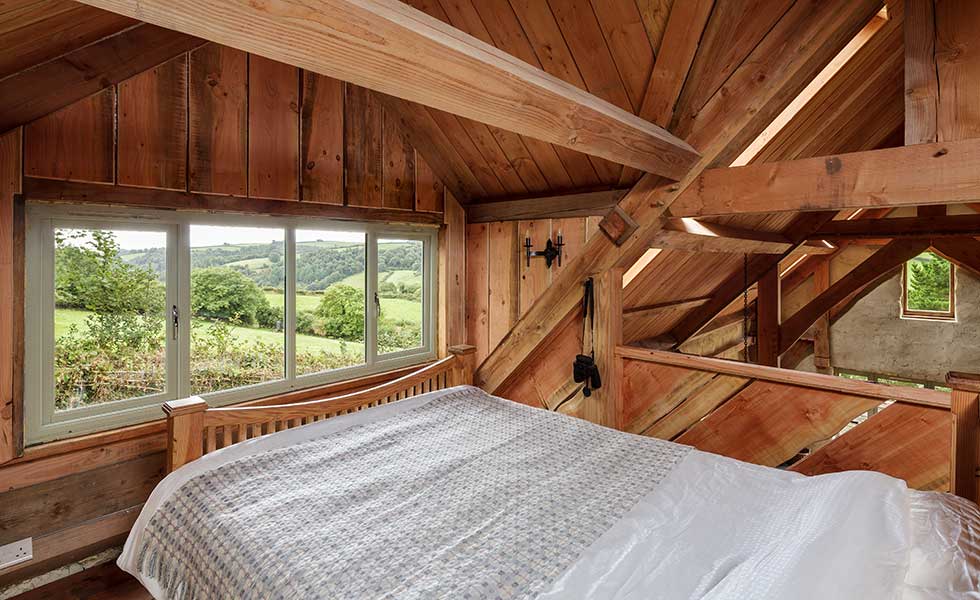
Get the Homebuilding & Renovating Newsletter
Bring your dream home to life with expert advice, how to guides and design inspiration. Sign up for our newsletter and get two free tickets to a Homebuilding & Renovating Show near you.
Claire is Brand Development Editor and the former Editor in Chief of Homebuilding & Renovating website and magazine. She became Editor of Homebuilding & Renovating in 2016 and has been a member of the team for 16 years. An experienced homes journalist, her work has also appeared in titles such as Real Homes and Period Living.
She has a particular interest in green homes and sustainability, and interior design is a passion too; she has undertaken qualifications in this area.
After finishing a major renovation of a period cottage, she is now onto her next project: overhauling a 1930s property in the Shropshire countryside.

